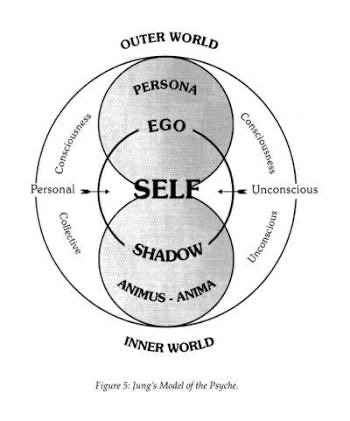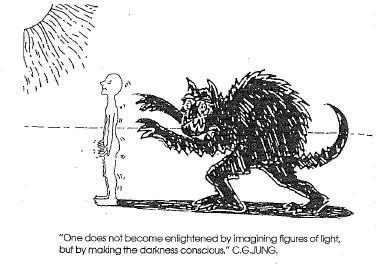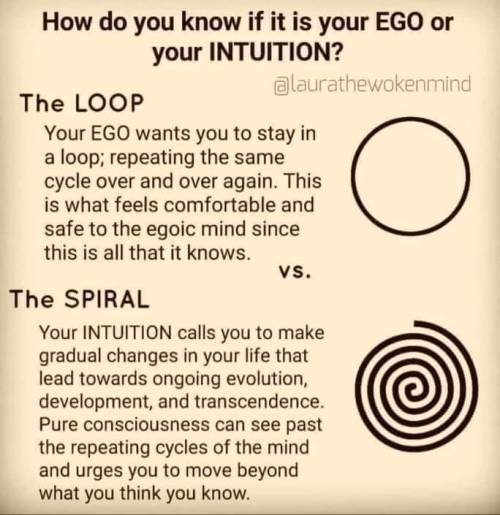"The Sacred Story Of Sophia Begins At One Moment In Endless, Measureless Time, But Not The First Moment

"The sacred story of Sophia begins at one moment in endless, measureless time, but not the first moment of the creation of the Universe. This term Universe, capitalized, refers to the totality of galaxies in the immeasurable matrix of space-time. The Universe already exists when Sophia's story begins, and it has never not been there. There is no moment when it arose, nor will there ever be a moment when it ceases to be. There is no big bang in the Gnostic vision, nor in its Hindu, Tantric, and Buddhist counterparts where emanation and mirroring are the dynamic principles that operate throughout the cosmos and within the human psyche: emanation, not creation; mirroring, not cause and effect. The Eternal Ground is immutable but the Universe is inherently unstable, perpetually in flux, its contents ever changing, morphing, cycling. Life is a mystery of ceaseless, seamless becoming, a living dream that constantly shifts from one scene to another, every event pivoting on the timeless moment, Now.
What changes in the Universe is not the power source, but the conditions for the manifestation of that mysterious sourcing power. "Eternity is in love with the productions of time," said the mystic poet William Blake. Every moment holds the exciting possibility that a singularity will emerge from the depths of the Eternal Now. Novelty will appear and ripple through the manifest worlds.
The Universe arises as a material apparition from a hidden power source, a foundation awareness that never discloses itself directly: the Originator. In Dzogchen the foundation awareness is called rigpa, in Hindu Tantra, parasamvit, in the Gnostic materials, pronoia. (I cite these parallels, not to display my dubious erudition, but to stress that Gnostic thought is not a freak, isolated phenomenon, as most religious scholars take it to be.)
Tantric metaphysical teachings tell us that the innate inclination of the sourcing power is to veil itself so that it can appear as other than what it is. Its self-veiling power is called maya. Wrongly considered to mean illusion, maya is in reality the power by which the foundation awareness, which stands beyond time, space, and matter, assumes manifold appearances and acts in time and space, assuming material form. Paradoxically, it hides in order to be revealed. The foundation awareness does not confine itself in the acts and appearances it manifests, but operates through them. The material apparitions it produces, including stars, planets, human beings, and microbes, are real and alive, not illusory. Gnostics did not teach that the material world is an illusion, but, as we shall see, they warned that there is an iilusionary factor working in the cosmos and in the human mind, correlatively, that causes us to misperceive the world order and lose our place in it. This is the Archontic factor that emerges in episode 4 of the sacred story."
~ John Lamb Lash, 'Not in His Image: Gnostic Vision, Sacred Ecology and the Future of Belief'
Artwork: 'On the Edge of Harmony by Cameron Gray
More Posts from Sophia-crystalis and Others
What are Archetypes?
Psychologically, whether we realize it or not, we make a connection between a picture/symbol and what we perceive. We may not always be aware of this, however. Even if we believe an archetype holds no meaning for us, something as simple as a square, will be identified within the unconscious mind as an archetype. Therefore, the square may be unconsciously connected to a house, a foundation, a…

View On WordPress
"Let us keep courage and try to be patient and gentle. And not mind being eccentric, and make distinction between good and evil."
- Vincent van Gogh
“Find someone who grows flowers in the darkest parts of you.”
7/14/22 23:58
Vähän naurahdin ötökkämielikuvalle. Metsänpeitto viittanee johonkin välitila ulottuvuuteen🤔 Se, että metsän väki olisi ilkeyttään sinne peittänyt, on höpöhöpö pelottelua.👍
Metsänpeitto on henkien luoma valli oman maailmansa ja meidän maailmamme välillä - metsä "peittää" metsänpeittoon joutuneen. Metsänpeittoon joutunut ihminen tai karjaeläin ei enää löydä kotiin, vaikka oma kotimetsä olisi kuinka tuttu. Ja silloinkin, jos ja kun metsänpeittämä löytäisikin kotipihaan, koti ei kuitenkaan ole kuin sen pitäisi. Oman talouden väki ei ehkä näe tai kuule kotiinpalannutta ollenkaan, tai saattaa katsoa hänet ventovieraaksi - hän ei ehkä tunnista kodin väkeä, tai kodin väki ei tunnista häntä. Silloin on palattava metsään, yritettävä palata takaisin paikkaan jossa metsänpeittoon joutui, ja tehtävä takaperin samat askeleet, joiden kautta metsänpeittoon alunperin päätyi.
Vanhan kansan uskomusten mukaan metsän väki peitti ihmisiä ja metsiin laiduntavaa karjaa tahallaan, joko piruuttaan tai hyötyäkseen siitä itse jotenkin. Sitä en usko, kun eivät ne siitä itse mitenkään hyödy, enkä usko että nekään tahtovat kutsumattomien vieraiden pyörivän maillaan yhtään pidempään kuin on pakko.
Ehkä kyseessä on samanlainen ilmiö kuin ihmisten koteihin eksyvät hyönteiset - ihminen ei hahmota metsänpeittoa eikä ymmärrä miten on päätynyt tähän käsittämättömään tilaan, eikä ymmärrä miksei pääse siitä pois, vaikka selkeästi näkee minne tahtoo mennä. Ja samalla metsän väki, joka on ihmisen täyden ymmärryksen ulottumattomissa, seisoo vieressä kädet puuskassa katsoen pienen olennon ponnistelua miettien "voisitko vaikka mennä siitä avoimena seisovasta parvekkeen ovesta, etkä yrittäisi vieläkin lentää ikkunasta läpi. Ei voi olla noin vaikeaa. Käyttäisit nyt sitä yhtä aivosolua mikä sinullakin pitäisi olla."
You can't save time. You can only spend it, but you can spend it wisely or foolishly.
-- Benjamin Hoff, The Tao of Pooh
Shadow Work
Origins, Meaning and Utility
The Structure of the Mind

Carl Jung theorized the existence of three levels/spheres in the human psyche: the Ego, representing the conscious mind, the Personal Unconscious where memories are contained and the Collective Unconscious, where all knowledge and experiences of the species are shared.
Each Sphere has in it a certain number of Archetypes, used to better describe the components of those structures, and the Shadow is one of them.
What is the Shadow

The shadow can be seen as a instinctual or primitive part of ourselves, it exists as part of the unconscious mind and is composed of repressed ideas, weaknesses, desires, instincts, and shortcomings.
It is this archetype that contains all of the things that are unacceptable not only to society, but also to one's own personal morals and values, normally going against social norms and rules as well as what we personally consider right.
The Shadow is often described as the darker side of the psyche, representing wildness, chaos, and the unknown, and it is common for people to deny this element of their own psyche and instead project it on to others.
The Shadow in Witchcraft and Benefits of Shadow Work

Art: Unknown
The Shadow, in witchcraft, can represent The Unknown, hidden depth of ourselves. Speaking in terms of energy, this is an area that can be a deep source of energetic issues, because it’s locked up in the dark and always striving to reach the light.
To not work with one’s Shadow is to make it greedy and aggressive, as well as denying a big part of oneself, making everything a half of a whole.
Through that brief explanation, we can already establish the importance and role of the Shadow in witchcraft, and with that in mind, comes the concept of Shadow Work.
Shadow Work can be seen in a number of practices, meditation, trances, inner journey’s, lucid dreaming, astral travels, spells and divination.
The method can change, but the principle is simple: Centering your intent to self discovery, self knowledge and self acceptance.
Working with one’s Shadow is not only beneficial to one’s craft, as it allows one to get in touch with their intuition as well as allows for easier connection with one’s guide/guides, but it also allows for healing and acceptance of one’s feelings and needs.
Think of all aspects of life as a wheel. If there is one part bent, the wheel can turn, but with more effort. If the owner spends time fixing that bent part, the wheel will turn in a much more smooth manner.
That is what happens when you take the time to do Shadow Work, you have to put in effort, and most of the time it’s not easy, but once done, all other components on the wheel of your life will be relieved to move on without that obstacle that makes their job harder.
The Shadow is not evil, as evil is just a moral compass invented by humans. It is a part of one’s nature, and to deny it is to supress a connection with yourself.
Take the time to know and accept your shadow, and you’ll see that life will be a little easier.
References:
A Natureza da psique (Structure & Dynamics of the Psyche) by C.G. Jung
The Archetypes and the Collective Unconscious by C.G. Jung
-
 sophia-crystalis reblogged this · 10 months ago
sophia-crystalis reblogged this · 10 months ago -
 silencedminstrel liked this · 2 years ago
silencedminstrel liked this · 2 years ago -
 sight-decoding reblogged this · 2 years ago
sight-decoding reblogged this · 2 years ago

I am a light shaman from Finland✨ and also a mother of three who's sometimes tired of doing the dishes.
14 posts






